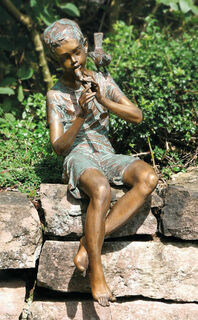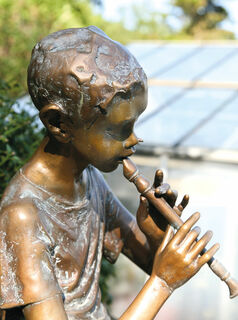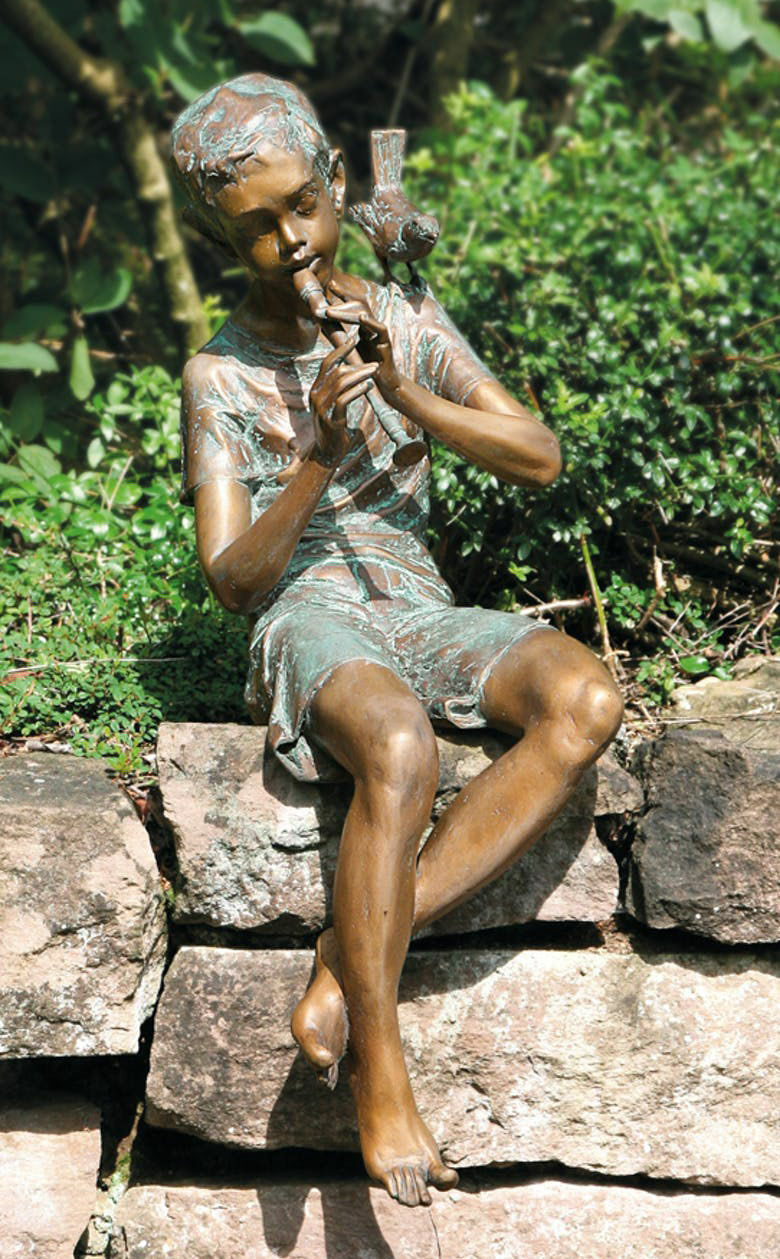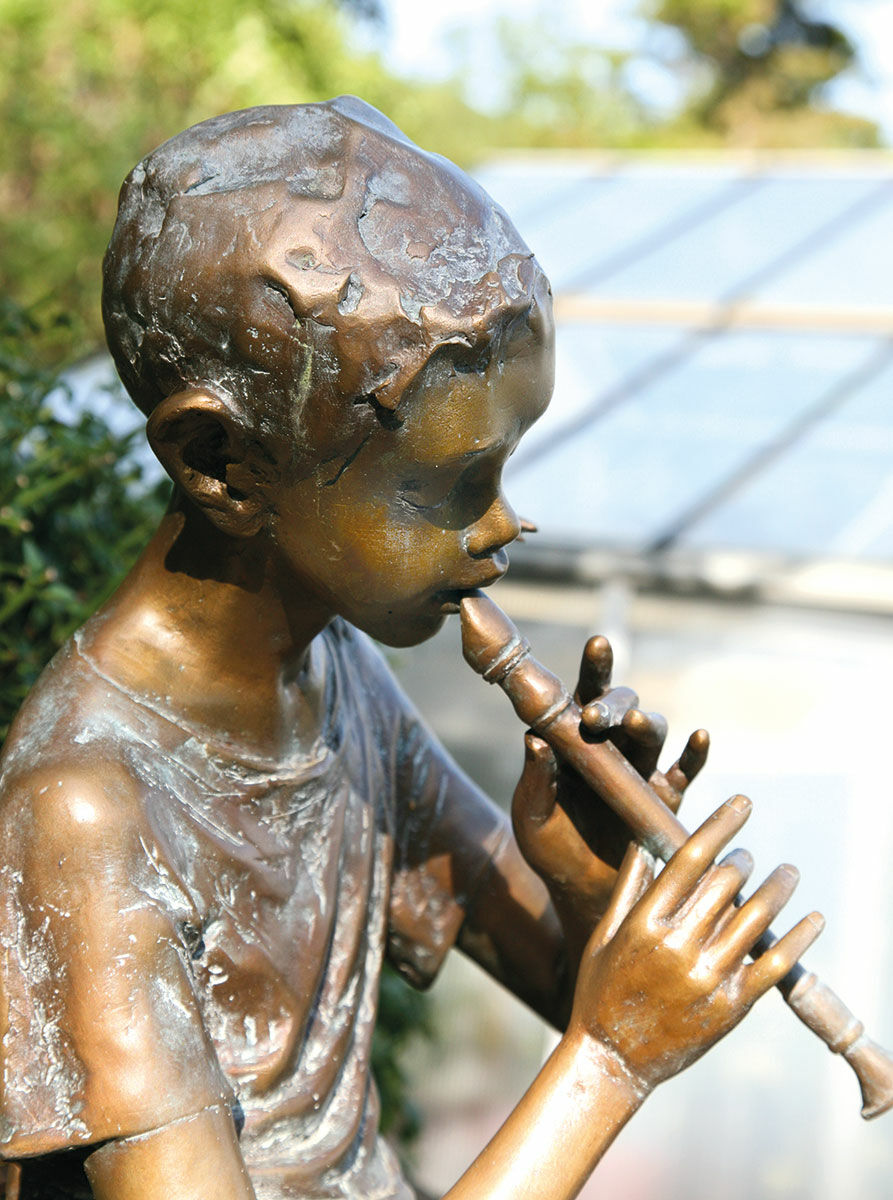Garden sculpture "Boy with Flute", bronze
Garden sculpture "Boy with Flute", bronze
Quick info
limited, 150 copies | numbered | signed | bronze | chiselled | patinated | size 68 x 26 x 37 cm (h/w/d) | weight approx. 19.6 kg
Detailed description
Garden sculpture "Boy with Flute", bronze
The sculptural work of Pawel Andryszewski is richly detailed and of highly realistic accuracy, which is also expressed in the series of works of children making music. What could be more beautiful than playing spring songs while sitting in the sun?
Edition in bronze, cast using the Lost-Wax-Process, chiselled and patinated by hand. Limited edition of 150 copies, numbered and signed. Size 68 x 26 x 37 cm (h/w/d). Weight approx. 19.6 kg.
About Pawel Andryszewski
Pawel Andryszewski was born in 1964 in Poznan, Poland and attended the Poznan State Secondary School of Fine Arts from 1978 to 1984. He continued with studies in painting, graphics and sculpture at the Art Academy Poznan from 1984 to 1990. Even as a young student and before graduating in sculpture and small sculptural forms, Andryszewski received his first awards. Since 1992, he has been working as a freelance artist.
The broad artistic spectrum that became evident during his early years at the art academy has persisted in Andryszewski's work to this day. He is equally active in the fields of drawing, painting and sculpture, with an increasing focus on working with the material bronze. His sculptural work is of highly realistic accuracy.
An alloy of copper with other metals (especially with tin) used since ancient times.
When casting bronze, the artist usually applies the lost-wax technique which is dating back more than 5000 years. It's the best, but also the most complex method of producing sculptures.
First, the artist forms a model of his sculpture. It is embedded in a liquid silicone rubber mass. Once the material has solidified, the model is cut out. The liquid wax is poured into the negative mould. After cooling down, the wax cast is removed from the mould, provided with sprues and dipped into ceramic mass. The ceramic mass is hardened in a kiln, whereby the wax flows out (lost mould).
Now we finally have the negative form, into which the 1400° C hot molten bronze is poured. After the bronze had cooled down, the ceramic shell is broken off and the sculpture is revealed.
Now the sprues are removed, the surfaces are polished, patinated and numbered by the artist himself or, to his specifications, by a specialist. Thus, each casting becomes an original work.
For lower-quality bronze castings, the sand casting method is often used which, however, does not achieve the results of a more complex lost-wax technique in terms of surface characteristics and quality.
Term for an art object (sculpture, installation), which is produced in multiple copies in a limited and numbered edition according to the artist‘s will.
Artist's multiples have been called the most accessible and affordable art on the market.
A plastic work of sculptural art made of wood, stone, ivory, bronze or other metals.
While sculptures from wood, ivory or stone are made directly from the block of material, in bronze casting a working model is prepared at first. Usually, it is made of clay or other easily mouldable materials.
The prime time of sculpture after the Greek and Roman antiquity was the Renaissance. Impressionism gave a new impulse to the sculptural arts. Contemporary artists such as Jorg Immendorf, Andora, and Markus Lupertz also enriched sculptures with outstanding works.






